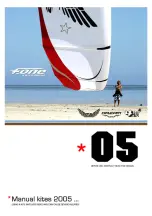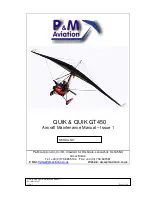
MOONEY
M20V ACCLAIM ULTRA
SECTION X
SAFETY INFORMATION
10 - 6
AIRPLANE FLIGHT MANUAL
ORIGINAL ISSUE - 03-16-2017
We urge all pilots to be thoroughly familiar with and use the information in this manual.
ADVISORY INFORMATION
Airmen can subscribe to services to obtain FAA NOTAMS and Airman Advisories, and these are
also available at FAA Flight Service Stations. NOTAMS are documents that have infomation of a
time-critical nature that would affect a pilot’s decision to make a flight; for example, an airport
closed, terminal radar out of service, enroute navigational aids out of service, etc.
GENERAL INFORMATION ON SPECIFIC TOPICS
FLIGHT PLANNING
FAR Part 91 requires that each pilot in command, before beginning a flight, familiarize himself
with all available information concerning that flight.
All pilots are urged to obtain a complete preflight briefing. This would consist of weather; local,
enroute and destination, plus alternates, enroute navaid information. Also airport runways ac-
tive, length of runways, takeoff and landing distances for the airplane for conditions expected
should be known.
The prudent pilot will review his planned enroute track and stations and make a list for quick ref-
erence. It is strongly recommended a flight plan be filed with Flight Service Stations even though
the flight may be VFR. Also, advise Flight Service Stations of changes or delays of one hour or
more and remember to close the flight plan at destination.
The pilot must be completely familiar with the performance of the airplane and performance data
in the airplane manuals and placards. The resultant effect of temperature and pressure altitude
must be taken into account in determining performance if not accounted for on the charts. Appli-
cable FAA manuals must be aboard the airplane at all times including the weight and balance
forms and equipment lists.
The airplane must be loaded so as not to exceed the weight and the weight and balance loading
center of gravity (c.g.) limitations. Also, that at least minimum fuel for takeoff is aboard and suffi-
cient for the trip, plus reserves. Oil in the engines should be checked and filled as required.
INSPECTIONS - MAINTENANCE
In addition to maintenance inspections and preflight information required by CFR Part 43 and 91,
a complete pre-flight inspection is imperative. It is the responsibility of the owner and operator to
assure that the airplane is maintained in an airworthy condition and proper maintenance records
are kept.
While the following items can not substitute for the pre-flight specified for each type of airplane,
they will serve as reminders of general items that should be checked.
SPECIAL CONDITIONS CAUTIONARY NOTICE
Airplanes operated for Air Taxi or other than normal operation and airplanes operated in humid
tropics or cold and damp climates, etc., may need more frequent inspections for wear, corrosion
and or lack of lubrication. In these areas periodic inspections should be performed until the oper-
ator can set his own inspection periods based on experience.
-NOTE-
The required periods do not constitute a guarantee that the item will reach the
period without malfunction, as the aforementioned factors cannot be controlled
by the manufacturer.
Corrosion, and its effects, must be treated at the earliest possible opportunity. A clean dry sur-
face is virtually immune to corrosion. Make sure that all drain holes remain unobstructed. Protec-







































